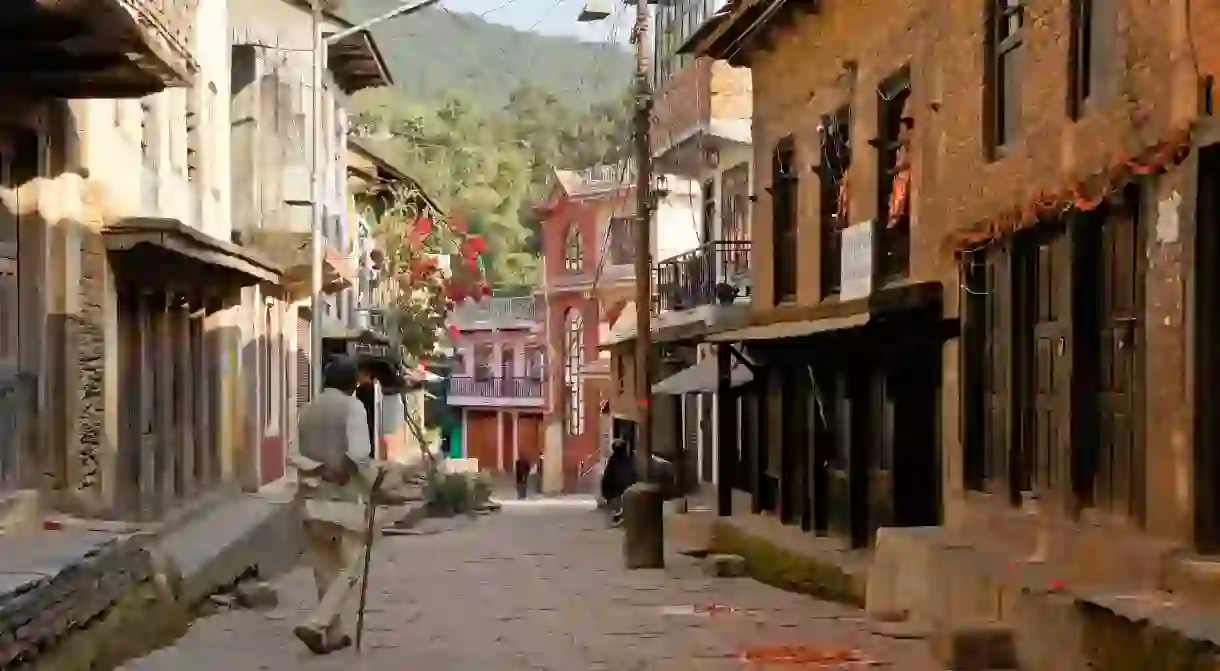How to Spend Two Weeks in Nepal

Nepal, nestled between India and Tibet, is world-renowned for its high-altitude mountains and friendly people. This two-week itinerary takes in some of the country’s most beloved places, including bustling Kathmandu and Pokhara, the gateway to the Annapurna mountains.
Experience the best of Nepal, including Kathmandu, Pokhara and Chitwan National Park, on Culture Trip’s specially curated 11-day Nepal adventure – led by our Local Insider.
Days 1-2: Kathmandu
After landing at Tribhuvan International Airport, take a taxi to your accommodation in the city centre: the Kathmandu Guest House, Hotel Ganesh Himal and Dwarika’s are all good options.
Spend the rest of the day exploring the city, starting off in the bustling Durbar Square, the focal point of Old Kathmandu. After visiting the square’s various palaces and museums, head over to Swayambhu, an ancient Buddhist temple high on a hill in the west of the city. In the evening, check out the remarkably diverse food scene in Thamel, Kathmandu’s traveller heartland: highlights include Thamel House, which offers a classy take on traditional Nepali cuisine, and Café Mitra, a relaxed restaurant-bar with a wide-ranging menu.
On your second day, visit the nearby town of Boudha, whose huge white stupa (dome-shaped shrine) is one of the most important Tibetan Buddhist monuments outside of Tibet. Later in the day, head south to Patan, Kathmandu’s sister city. Here, you’ll find a host of palaces, temples, shrines and mansions, centred on Patan’s own Durbar Square. There are also several excellent restaurants and bars, including the reliable Dhokaima Café.

Day 3: Bhaktapur and Pashupatinath
In the morning, make the short journey east to Bhaktapur, a charming town in the Kathmandu Valley. After checking in to your accommodation – try Pagoda Guest House or the Peacock Guest House – wander around the historic centre. Highlights include the Durbar Square, which boasts the atmospheric Royal Palace and the excellent National Art Museum. Make sure you also try some of Bhaktapur’s famous juju dhau: a sweet, spiced, deliciously rich buffalo milk curd.

In the afternoon, visit Pashupatinath; its eponymous mandir (temple) is the holiest Hindu pilgrimage site in Nepal. There are also several other impressive temples here, as well as bathing and cremation ghats (shoreside platforms or steps) along the Bagmati River.
Day 4: Bandipur
Head back to Kathmandu and then take a bus west to Bandipur: a small, beautifully preserved Newari town perched high on a ridge above the Prithvi Highway. After checking in to a guesthouse – the gorgeous Old Inn is the pick of the bunch – spend the rest of the day leisurely looking around the bazaar, which is packed with elegant temples and shrines, and the Tundikhel, a former parade ground that offers sweeping mountain views.

Days 5-6: Pokhara
Take a jeep back down to the highway and then catch a bus to Nepal’s traveller hub, Pokhara, which sits on the shore of Phewa Lake, overlooked by the epic Annapurna mountain range of the Himalayas. After checking in to your accommodation – try Sacred Valley Inn, the Castle Resort or the Waterfront Resort – spend the afternoon exploring the city. Sit by the lake and enjoy the views, or check out the many roadside shops selling mountain gear.

The next day, head out into the Pokhara Valley, where there are several simple hikes. Walk to the World Peace Stupa for superlative views, or venture up the mini-peak of Sarangkot, a popular starting point for paragliding trips. There are also plenty of opportunities for mountain-biking, whitewater-rafting, skydiving, ziplining and bungee-jumping, as well as gentler activities such as meditation sessions and yoga classes. For a unique experience and a bird’s-eye view of the surrounding Himalayas, take a microlight flight with Avia Club Nepal.
Whatever you choose to do, you’re likely to build up an appetite. Fortunately, Pokhara has plenty of great places to eat and drink, including Almond’s, which offers tasty Indian cuisine, and Olive Café, with a creative, globe-trotting menu.
Days 7-12: Trekking
Pokhara is the gateway to the Annapurna and Manaslu regions, two of the most popular places to go trekking in Nepal. The scenery here is among the most spectacular in the country: a series of jagged, snow-covered peaks, dense bamboo and rhododendron forests, barren deserts, lush green hills, icy lakes and sleepy villages strung with colourful prayer flags.
Although you could easily spend three weeks or more on some of the longer treks, notably the famous Annapurna and Manaslu circuits, there are plenty of shorter options if your time is more limited. These include the three-to-five-day Ghorepani Poon Hill trek, the three-day Ghandruk trek and the six-to-eight-day Khopra Danda trek.

Days 13-14: Chitwan National Park
After finishing your trek and staying overnight in Pokhara, take an early morning bus south to the village of Sauraha on the edge of Chitwan National Park. Check in to your accommodation – such as Sapana Village Lodge – then head out on an afternoon canoe trip along the Rapti River, which borders the park. Keep an eye out for mugger and gharial crocodiles, plus birds such as kingfishers, hornbills and paradise flycatchers.

Spend your final day in Nepal exploring the park itself, with a morning walk and an afternoon jeep ride. Sightings of one-horned rhinos, for which Chitwan is famous, as well as deer and monkeys, are commonplace, though you will need a bit of luck to spot a tiger or wild elephant. Finish your trip with a sundowner and dinner at one of Sauraha’s laid-back riverside bar-restaurants.













